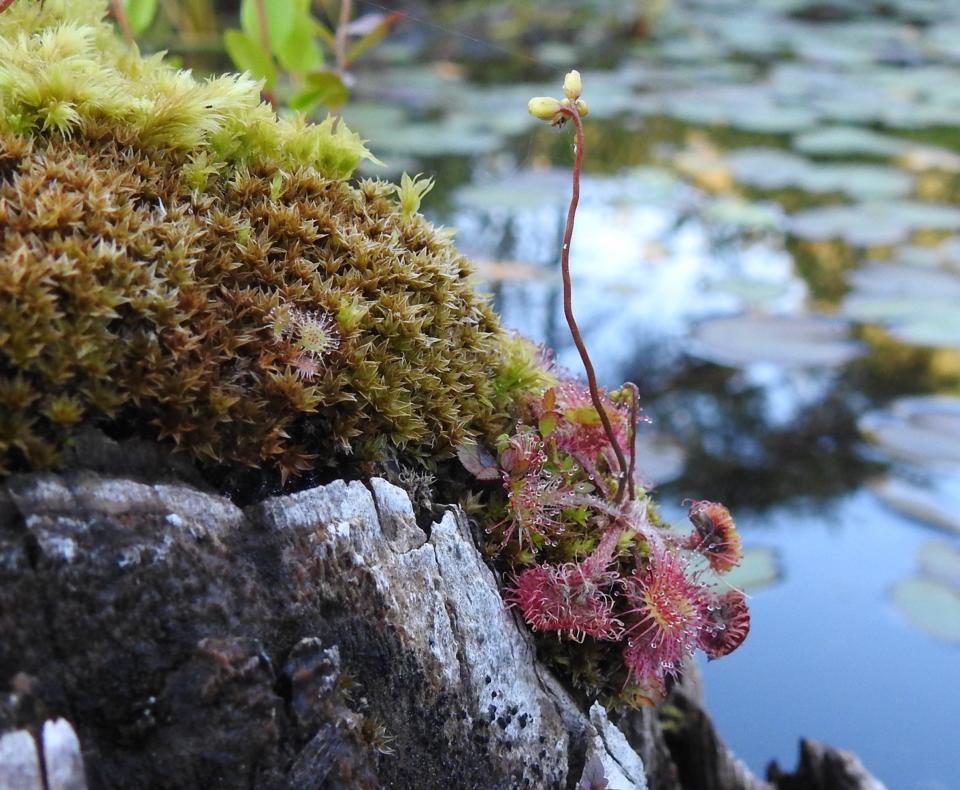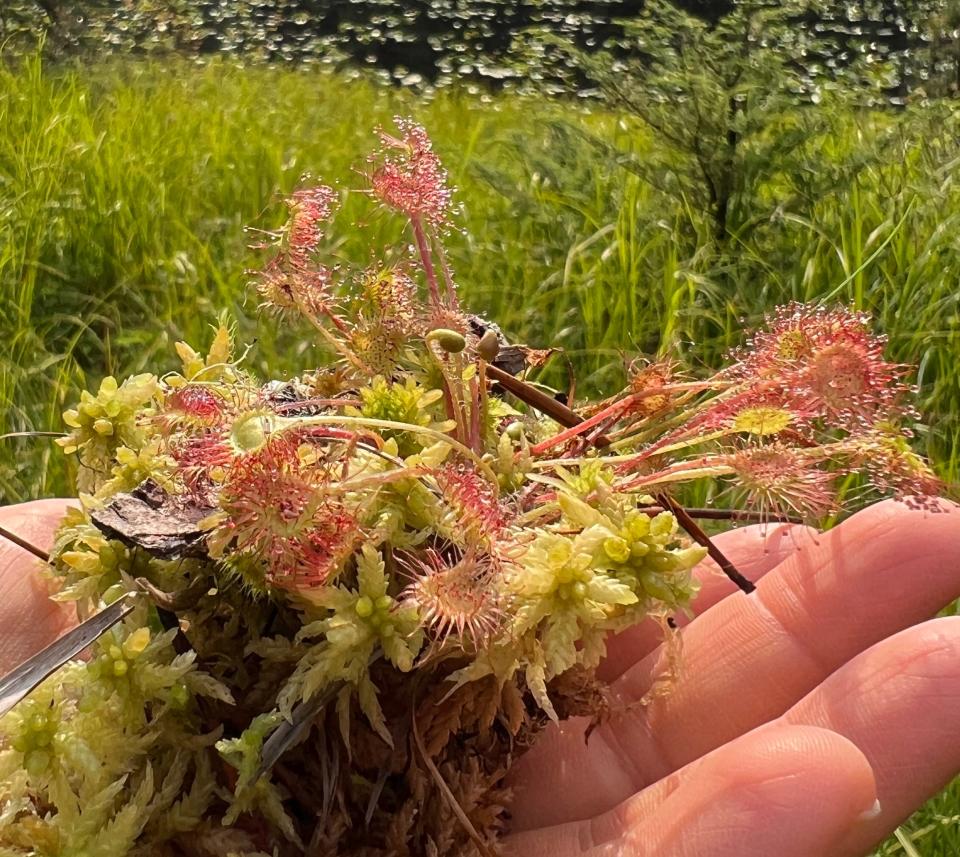Sundews, the insect eating plant that captivated Charles Darwin: Nature News
- Oops!Something went wrong.Please try again later.
World Bog Day was celebrated around the world on July 23. I celebrated by hiking to an Alaskan bog, or muskeg, as they are colloquially known. This particular bog surrounded a small lake that was ringed by wild orchids, stunted spruce and hemlock, and ever-present sphagnum moss. I was looking for one plant in particular-tiny, carnivorous sundews. We found them, nestled into the damp sphagnum, glistening with sticky drops of liquid.

As a biologist and biology teacher, I am a huge fan of Charles Darwin. One of the reasons I was looking for sundews and am currently so enamored of them is rooted in an 1860 letter (written just after publishing “Origin of the Species” in 1859) from Charles Darwin to Charles Lyell in which Darwin describes a manuscript he is working on about Drosera (the scientific name for the sundews). He states, “I care more about Drosera than the origin of all the species in the world.” I love his passion! Darwin, in the midst of testing the sensitivity of sundews to touch, continues, “Is it not curious that a plant should be far more sensitive to a touch than any nerve in the human body! Yet I am perfectly sure that this is true."

For some part of his life, Darwin was obsessed with sundews — a plant that is relatively common in New England, as well as Alaska, but is small enough that it tends to abide unnoticed on swamp edges, along culvert puddles, and in bogs. Darwin’s research into the diverse species of sundews led to the 1875 publication of “Insectivorous Plants,” still in use as a reference today.
Nature News: Is mullein a friend or foe to your garden?
Sundews are “flypaper” plants that trap prey in sticky hairs on their leaves. They make up one of the largest groups of carnivorous plants, found worldwide except for Antarctica. Tentacles protrude from their leaves, each with a gland that produces a sweet, sticky liquid that attracts and then traps insects. The droplets look like dew glistening in the sun, thus the plant’s common name. Once an insect becomes stuck, nearby tentacles coil around the insect, and within as little as 15 minutes, the helpless victim dies by suffocation from the sticky mucus. Next, digestive enzymes are released. Digestion is often a longer process, taking up to a couple of weeks for the plant to digest and absorb the insect’s nutrients.

Early August is prime sundew hunting season, especially with our rainy June and July. You don’t need to go to Alaska, look in a wetland near you. The best place to look is a sunny, sphagnum bog. Sphagnum moss creates an acidic environment that deters many plants because the acidic conditions slow decomposition creating a nutrient-poor environment and also interferes with the roots' ability to absorb available nutrients. Our diminutive sundew can handle these conditions. This is the point of its carnivory — it gets necessary nutrients from its insect prey. Bring a hand lens so you can study the surface of the sundews' leaves more carefully. If you are lucky, you might find a half-digested bug-proof of the predatory nature of this tiny jewel of a plant.
Susan Pike, a researcher and an environmental sciences and biology teacher at Dover High School, welcomes your ideas for future column topics. Send your photos and observations to spike3116@gmail.com. Read more of her Nature News columns online at Seacoastonline.com and pikes-hikes.com, and follow her on Instagram @pikeshikes.
This article originally appeared on Portsmouth Herald: Sundews, the carnivorous insect eating plant: Nature News

